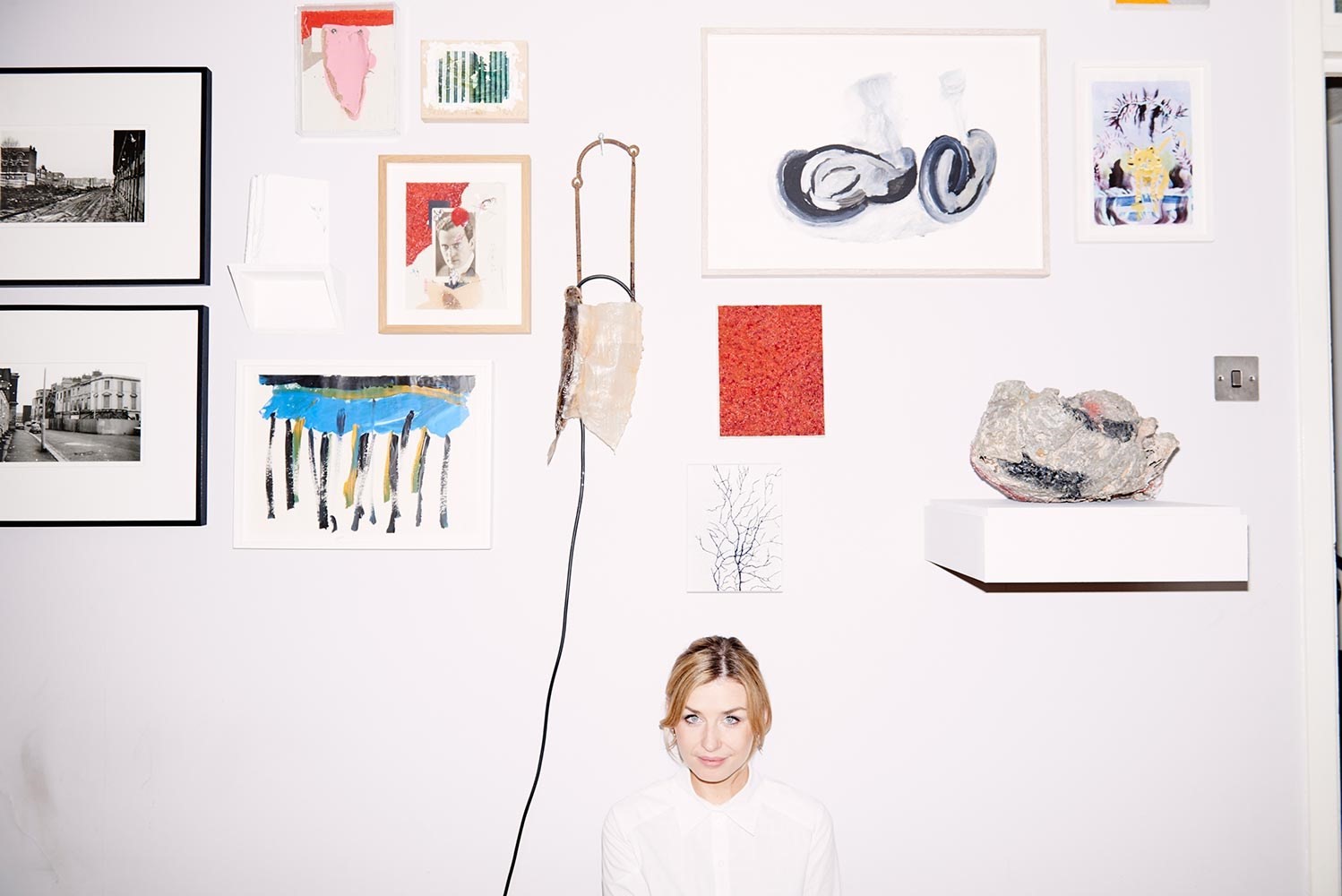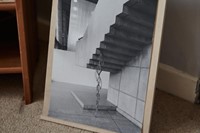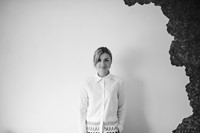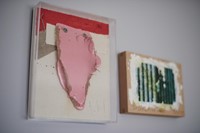Contemporary art consultant and curator Niamh White lives, like many of her generation, in a one-bed flat on an ex-council estate slap-bang in the centre of east London. Unlike most, however, her little space is crammed with contemporary art. It’s hanging on the walls, it’s wrapped in blankets and tucked behind the wardrobe, it’s propped up against the wall in the corridor. Where many of us invest our hard-earned money in clothes, or furniture, or extravagantly priced books, White buys art.
She works with it too, which perhaps goes some way to explaining her passion; having studied History of Art she knew that she wanted to be a part of the industry, but wasn’t sure of what she wanted to do exactly. After spending some time working on independent exhibition projects in Melbourne she returned to London and took up a position with prolific gallery Hauser and Wirth, which represents Louise Bourgeois, Pipilotti Rist and Dieter Roth’s estate, among many others. “That was kind of a dream come true, because their list of artists is the worlds’ best, basically,” White says.
It was while there that she bought her first piece of art – a limited edition piece by Phyllida Barlow, one of her favourite artists, which she picked up at Studio Voltaire. “I suppose you get into the idea that it’s something you can do,” she says. “Obviously I wouldn’t buy anything expensive at all at that point, it was more like editions. Then I discovered that I could buy original pieces by younger artists, and then it just spirals, you know? You get addicted.”
After leaving Hauser and Wirth – “I just found that it was a little bit restrictive because it was so commercially focused” – White spent a number of years as Curator of Exhibitions at SHOWstudio before branching out to set up her own independent art consultancy. She’s gotten off to a flying start, working on a uniquely diverse spread of projects, from curating exhibitions and supporting emerging artists to consulting for both new and experienced collectors.
Her personal collection, meanwhile, has multiplied. Her walls bear an impressive spread; small, deep red canvases and collages by her boyfriend, artist Tim A. Shaw, sit alongside a hunk of the studio floor from Nick Knight's SHOWstudio, compiled of years of layers on white paint; a diminutive oozing sculpture by Andy Holden sits next to her TV, and pieces by John Savage and Steven Antonakis line the walls. It's quite a sight to behold. "That’s basically where all my money goes now," she says, gesturing towards the wall, "which is really nice."
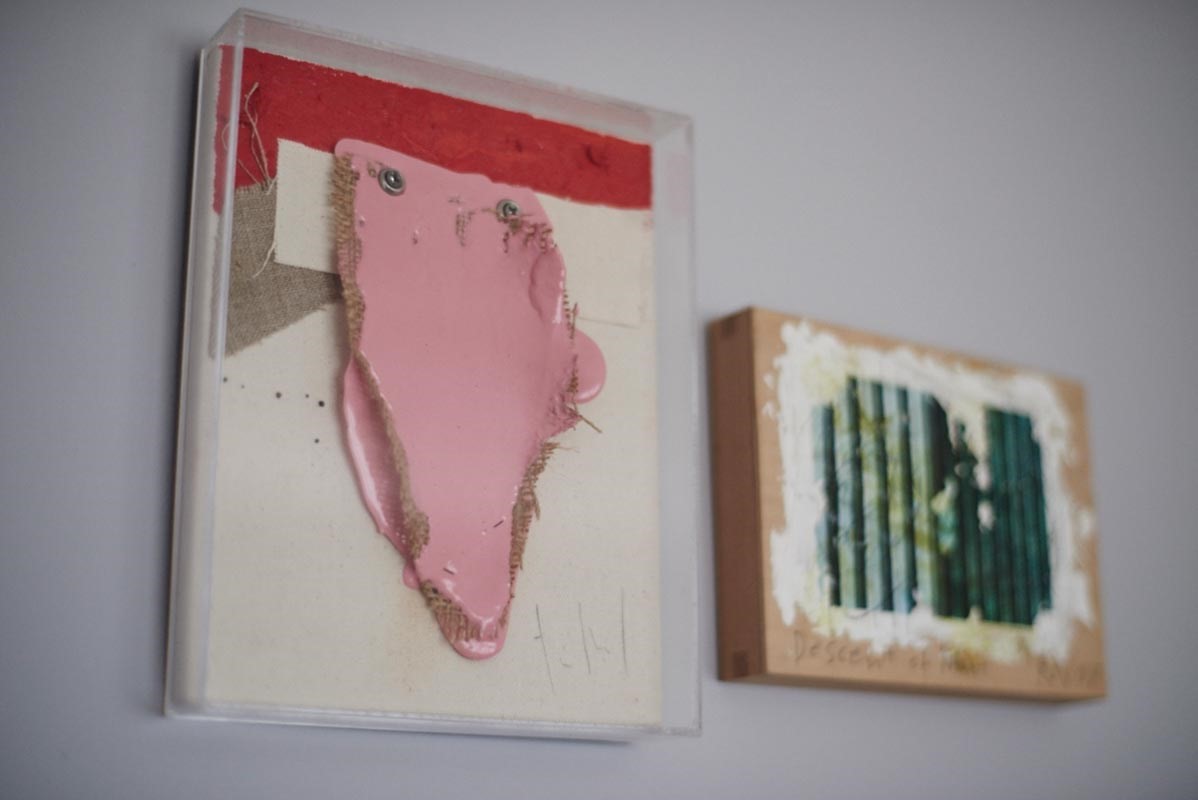
What is it that you love about buying art?
“It’s a funny thing when you buy a new piece – I think you feel like it tells you something about the world, like it makes you think differently, and so it’s a visual or conceptual way of understanding the world. I really like the idea of being surrounded by that. I also like the idea that your collection becomes like a portrait – it’s a reflection of the world, but it’s also a reflection of yourself. Inevitably what you’re interested in is going to be what you buy. I’m doing a lot of consultancy now, mainly for friends, and it’s really interesting to see how their collections develop.”
When you first started collecting, were you drawn to aesthetic or to the artists themselves?
"A bit of both really. Obviously aesthetic is really important, because you’ve got to enjoy it, but the more you work with younger artists, the more exciting it is to see how they develop. What’s also quite nice about buying from younger artists is that you feel, not that you’re supporting them, but that by buying from them you’re letting them keep going for a bit longer."
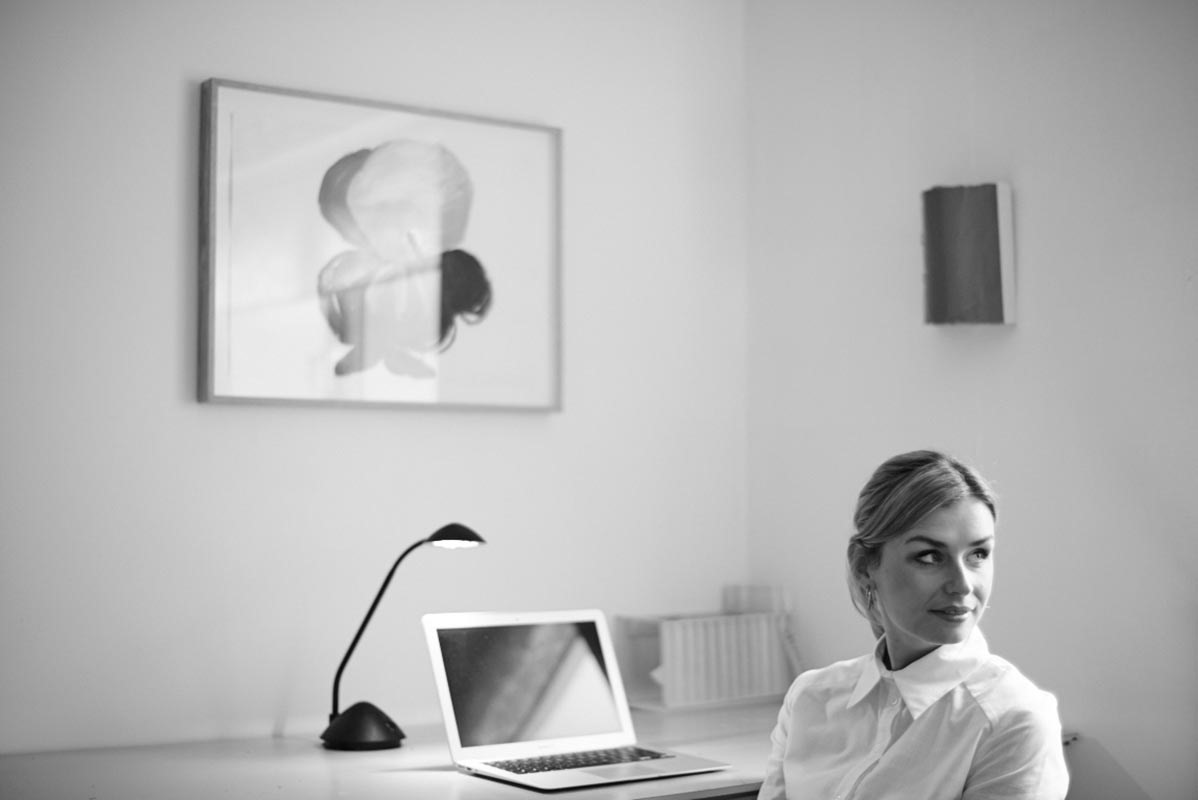
Where do you source pieces to buy?
“I do a lot of research to find things popping up in odd places; in galleries that aren’t so well known maybe, or a more established artist might have shown in a little gallery somewhere many years ago, and they’ve still got some work available. It’s not necessarily about going down the regular route. The other thing is looking at auctions; you can find some really good things popping up that haven’t necessarily gone through the gallery system. I’ve got an Angela de la Cruz, for example, that’s from an auction, and I’ve got a drawing from 1836 that came from an old master gallery. It varies wildly.”
Do you have it all out here?
“Some of it is tucked away, mainly because of space. It’s also quite nice to change things over sometimes, so you still see everything clearly.”

Is there a guiding theme running through your collection?
“I think so. I’ve only realised what direction it’s going in since I've grown it, and I think a lot of it is to do with the idea of anti-monumentalism. It’s very anti-macho; I like things that are quite fragile, and on the verge of crumbling. These photographs, for example, are from 1977 and they're by John Savage, from a series called Uninhabited London which is all about west London – places that are really affluent now, but they are completely derelict in his photographs. I bought that ages ago. That one over there [she gestures to a photograph of a paper ball] is an Alex Ball. It’s a limited edition, and I think it’s kind of funny. It could be a statue, but it’s just a crumpled up piece of paper."
What you think fuels your collecting?
"I love research, and reading, and theory, so I suppose I do get a joy out of that. A lot of my time is spent looking at what artists are doing, and I suppose the more you have around, the more you’re submerged in it. It’s a funny thing, because I don’t buy much of anything else; it’s not that I love owning things – I don’t really like clutter. It’s more having ideas and concepts around. It challenges you to be better.”
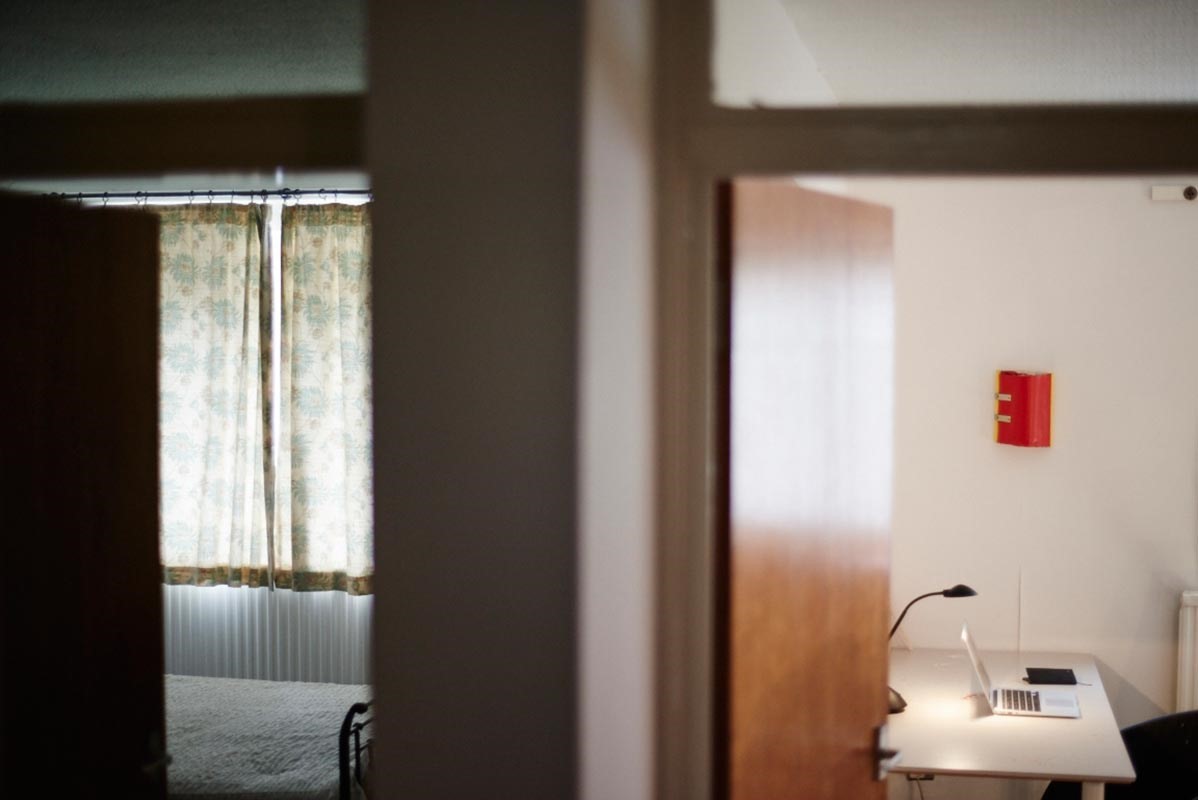
How did you first start consulting?
“I started off giving advice to friends. People would come over and look at the artwork, and so I started helping them; if I found something I would tell them: ‘I’m buying this because of this reason, do you want to have a look?’ I try to focus on education, so that people really understand what an artist is doing or trying to do – you want people to buy things because they really get it. That’s when it’s more interesting, because people start finding connections with the work.
What would your advice be to somebody who wants to get into collecting, but doesn't know where to start?
“Just see as much as you can; go and look at things, go look at the degree shows of people who are graduating, see what exhibitions are happening… I suppose once you’ve got it in your head that you’d like to buy something, then you start considering what might be appropriate and affordable. A lot of these works weren’t more than, say two or three hundred pounds when I bought them. It’s tricky though – the gallery system doesn't make it easy for you – and I suppose that’s why people want to be helped a bit."
With special thanks to Niamh White.
